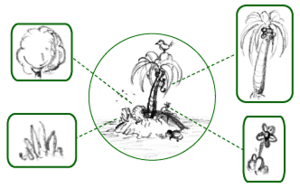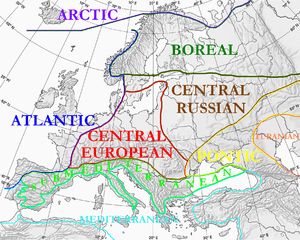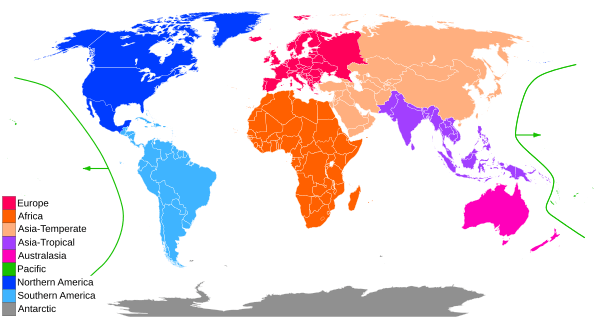Flora facts for kids
Flora is a word with two main meanings, especially when we talk about botany (the study of plants).
First, flora means all the plant life in a certain area or during a specific time. This usually refers to plants that grow there naturally. For example, the "flora of a forest" means all the trees, bushes, and flowers growing in that forest.
Second, flora can also mean a book or other guide that describes the plant species found in a particular place or time. These books help people identify different plants.
The word flora comes from Latin. It's named after Flora, the goddess of flowers in Roman mythology. The word for all the animal life in an area is fauna.
Scientists group plants into floras based on where they live, when they lived, or their special environment. For example, plants in a mountain area would be different from plants on flat land. We can also talk about "fossil flora," which means plants from a long time ago.
Sometimes, tiny organisms like bacteria are also called "bacterial flora." But usually, when we say flora, we mean plants.
Types of Flora
Plants are grouped into floras in different ways. This can be by their region, the time period they lived, their special environment, or the climate. For example, plants in a desert are very different from plants in a rainforest. Here are some common types of flora:
- Native flora: These are the plants that naturally grow in an area. They have been there for a very long time.
- Agricultural and garden flora: These are plants that people grow on purpose. This includes crops like corn or wheat, and flowers or vegetables in a garden.
- Weed flora: This term used to mean plants that people didn't want. But now, scientists use this term less often. This is because many plants once called "weeds" are actually helpful to the environment. They can be important for ecosystems.
Learning About Floras
A special book or website that lists the plants of an area is also called a "flora". These guides often need some special knowledge to use. They usually contain "keys" to help you identify plants.
A common type of key is a dichotomous key. This key asks you to look at a plant and choose between two options. You keep choosing until you find the plant's name.
One of the first books to use the name "Flora" for a plant guide was Flora Sinensis. It was written by Michał Boym, a Polish Jesuit, a long time ago. Even though it was called "Flora," it also described some animals!
See also
- Biome — A large area with similar plants and animals.
- Vegetation — A general word for all the plants in a place.
- Fauna — All the animals in a place.
 In Spanish: Flora para niños
In Spanish: Flora para niños




